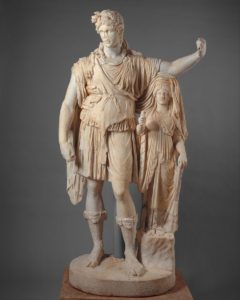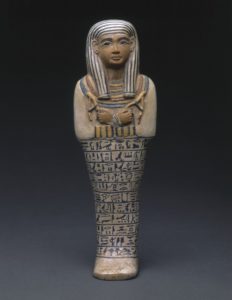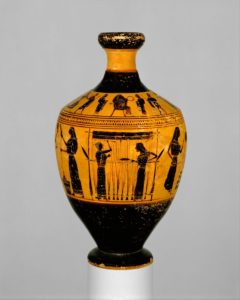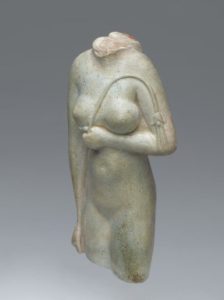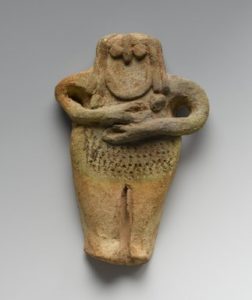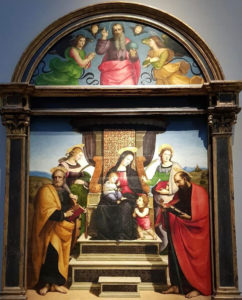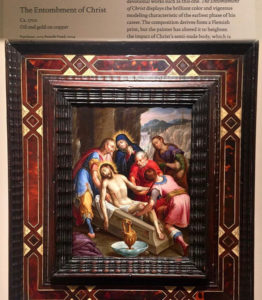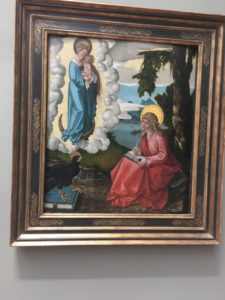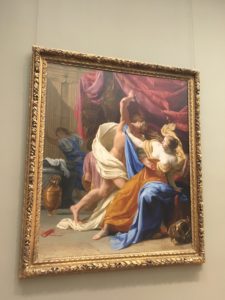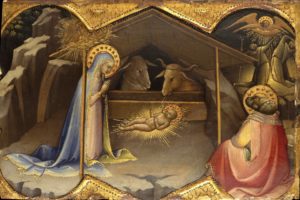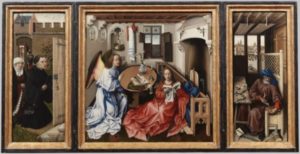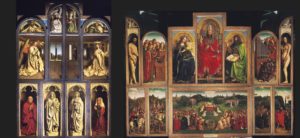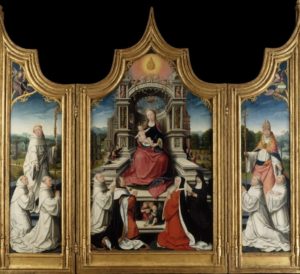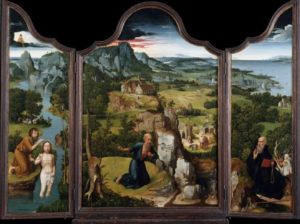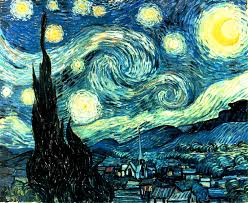“Egyptian Art.” Khan Academy, Khan Academy, www.khanacademy.org/humanities/ap-art-history/ancient-mediterranean-ap/ancient-egypt-ap/a/egyptian-art.
This article talks about how Egyptian art is not as naturalistic as Greek or the Renaissance art. It is more blocky, static, and strangely abstract. Egyptian art had a whole different purpose for their art. Most of Egyptian art was not intended to be seen. This art was supposed to be a personal entity of the owner. The art was supposed to provide the being to interact during the afterlife by using terrestrial objects such as the art. These arts were used to honor the dead. Many of the art that is portrayed in the Musuem is taken from the elite and royal status. The glitz and glam follows to our idea of modern aesthetic. Yet we fail to realize that art from lower status was used for the same purpose as art for the upper status. For three-dimensional Egyptian art was aimed to produce the real world. They used different objects to give the idea of naturalism. While two-dimensional art aimed to provide the most representative aspects of each element. Registers are parallel lines that were used to separate each artistic figure from another one in a painting. Size was used to tell the hierarchy of an object. The bigger the object may be the more important they are. This article offers background information on what Egyptian art is used for and why it was even created in the first place. It is useful because it informs you that Egyptian art doesn’t have the same purpose as other art. Rather it is used for the dead to interact with the living. While creating my art piece it can help me focus more on the art rather than the glitz and glam because that wasn’t the purpose of Egyptian art.
“Meet the Gilded Lady.” AMNH, www.amnh.org/explore/news-blogs/on-exhibit-posts/meet-the-gilded-lady.
This article talks about the Gilded Lady who has been embalmed for more than 1,500 years ago. She is one of the most well-preserved mummies in the collection. Keeping mummies preserved meant limited access to see what’s in the inside of the coffin. The exterior details offered clues about the Gilded Lady. The Gilded Lady is covered with intricate linen bindings, gilded headdress, and painted facial features. The mummy dates from 30 BC–AD 395, a period when Egypt was a province of the Roman Empire. While the practice of mummification endured in Egypt, it was transformed by Roman influences. Before the Roman era, for example, mummies had been placed in wooden coffins, while the Gilded Lady is preserved in only linen wrappings and cartonnage, a papier-mâché-like material. Also absent are the hieroglyphics that decorated mummy coffins in earlier times. CT scans provided an inside look on how the mummy may look like and how it was mummified. Through the CT scans it was discovered that the mummy was approximately 40 years old and suffered from tuberculosis. She also had white lumps under her chin and skull which may be resign to keep the mummy odor free. The reason I read this article is because I found it interesting how they used CT scans to sketch out an image on how the Gilded Lady looked like. It offers my project to focus on the features from the Gilded Lady to create a realistic Egyptian person from that time frame. It’s useful because it will give the sense of realism.
“Mummies in Egypt.” AMNH, www.amnh.org/exhibitions/mummies/mummies-in-egypt.
This article is about mummies in Egypt. The article discusses the mummification process in Egypt. Mummification took place because it was considered a key step in a person’s journey to the afterlife. The mummification process took place by removing many of the internal organs, desiccating the body in a drying salt, and wrapping the preserved body in linen before placing it in a wooden coffin. Since grave robbing was a problem in Egypt many of the coffins were made from limestone. This made it harder for robbers to rob. Sarcophagus was used to keep the coffin and the mummy in place. Egyptians believed that organs and intestines should be preserved because they would be needed in the afterlife. The organs would be placed in canopic jars with removable top carved to represents the four sons of Horus. Egyptians believed that this protected the organs. Archaeologists also discovered multiple animals mummified. They believed that they would be used as offerings to the God’s. It offer’s my project background information on the purpose of the mummification process. It’s useful because it shows that how much Egyptians prioritize the way the mummification process was done. Although sarcophagus was used to keep the mummy in place finding that as a common product in nowadays would be a hard thing.
Roehrig, Catharine H. “Egypt in the New Kingdom (ca. 1550–1070 B.C.).” In Heilbrunn Timeline of Art History. New York: The Metropolitan Museum of Art, 2000–. http://www.metmuseum.org/toah/hd/nking/hd_nking.htm (October 2000)
This article is about Egypt in the New Kingdom. Theban rulers began to drive the Hyksos kings (Dynasty 15) from the Delta. This was accomplished by Ahmose I. This led to the formation of the New Kingdom. The New Kingdom Pharoahs commanded unimaginable wealth. This was spent majority on to please the God Amun- re of Thebes. Dynasty 19 established a capital near Delta but Thebes still remained a cultural and art center. The Pharoahs built their temples in Thebes where they had a lot of religious texts. At the site of Dier-El Medina a lot of artistic artifacts are stored. This article offers my project information on where I can find the most creative art pieces in Egyptian time which would be The New Kingdom. This is useful because instead of wasting hours on trying to pick an art piece to focus/recreate I can pick and art piece from the New Kingdom because that was one of the things that the New Kingdom is known for.
“Tutankhamun’s Tomb (Innermost Coffin and Death Mask).” Khan Academy, Khan Academy, www.khanacademy.org/humanities/ap-art-history/ancient-mediterranean-ap/ancient-egypt-ap/a/tutankhamuns-tomb.
Tutankhamun’s tomb would be lost to history if it wasn’t discovered by the archaeologist Howard Carter in the Valley of the Kings. By finding Tutankhamun’s tomb it gave us an insight on how the New Kingdom was performing. Tutankhamun’s father turned the religious attention of the kingdom to the worship of the god Aten, the sun disc. While Tutankhamen shifted the focus of the country’s worship back to the god Am. Tutankhamen died at the age of 18 but his death is unknown. When Howard Carter discovered Tutankhamen tomb’s he was welcomed with strange animals, gold, and statues. Tutankhamun’s sarcophagus (a box-like stone container) held not one but three coffins in which to hold the body of the king. The outer two coffins were crafted in wood and covered in gold along with many semiprecious stones, such as lapis lazuli and turquoise. The inner coffin, however, was made of solid gold. The image of the Pharoah is shown in his divine form in the after-life. The goddesses Nekhbet (vulture) and Wadjet (cobra), inlaid with semiprecious stones, stretch their wings across his torso. Beneath these goddesses are two more—Isis and Nephthys—etched into the gold lid. Tutankhamen’s death mask is one of masterpieces of Egyptian art. This death mask is rested on top of the body. It is in the innermost coffin which is filled with gold. ). Tutankhamen is depicted wearing the striped nemes headdress (the striped head-cloth typically worn by pharaohs in ancient Egypt) with the goddesses Nekhbet and Wadjet depicted again protecting his brow. He also wears a false beard that further connects him to the image of a god as with the inner coffin. He wears a broad collar, which ends in terminals shaped as falcon heads. The back of the mask is covered with Spell 151b from the Book of the Dead, which the Egyptians used as a road map for the afterlife. This particular spell protects the various limbs of Tutankhamun as he moves into the underworld. This is useful to my project because I was planning on creating the Tutankhamun’s mask. Although I cannot create it with real gold and expensive stones, I will try my best. As a kid whenever I looked at this mask it seemed way more feminine to me than masculine. Using the image provided on the website I will try to use the Tutankhamun’s mask image to create a more modern masculine version.
